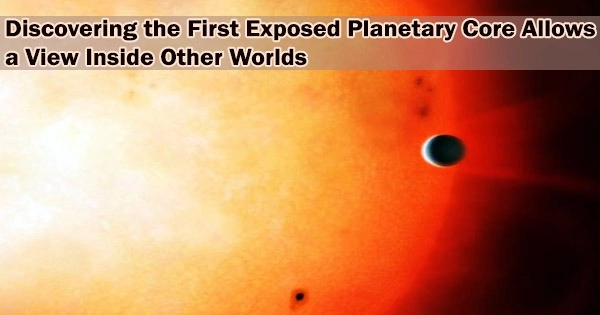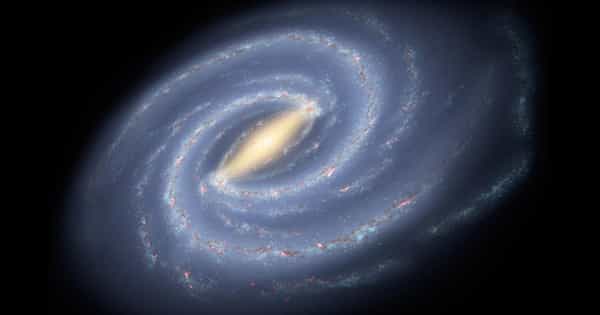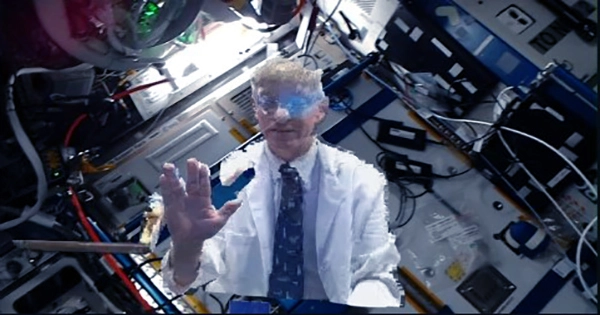Astronomers from the University of Warwick have found the remaining core of a gas giant circling a far-off star, providing a hitherto unattainable look into a planet.
It is thought that the core, which is the same size as Neptune in our solar system, is a gas giant that either lost its gaseous atmosphere or didn’t develop one early in its life.
The finding, which is believed to be the first time the bare core of a planet has been detected, was made by a team from the University of Warwick’s Department of Physics and was published today (1st July, 2020) in the journal Nature.
It presents a rare chance to look inside a planet’s innards and discover its makeup.
The TOI 849 b core, which orbits a star similar to our own at a distance of 730 light years, is so close to its host star that a year for it lasts just 18 hours, and its surface temperature is about 1800K.
TOI 849 b was found in a survey of stars by NASA’s Transiting Exoplanet Survey Satellite (TESS), using the transit method: observing stars for the tell-tale dip in brightness that indicates that a planet has passed in front of them. It was situated in the “Neptunian desert,” a term used by astronomers to describe a region near stars where planets of Neptune’s mass or greater are infrequently seen.
The item was subsequently examined with the HARPS instrument as part of a project directed by the University of Warwick at the La Silla Observatory of the European Southern Observatory in Chile. By monitoring the exoplanets’ “wobble,” or slight motions towards and away from us that register as minute fluctuations in the star’s spectrum of light, this makes use of the Doppler effect to determine the mass of the planets.
TOI 849 b is the most massive terrestrial planet that has an earth like density discovered. We would expect a planet this massive to have accreted large quantities of hydrogen and helium when it formed, growing into something similar to Jupiter. The fact that we don’t see those gases lets us know this is an exposed planetary core.
Dr. David Armstrong
The scientists found that the object is extremely dense, with all the material that makes up that mass compressed into an item the same size, and that its mass is 2-3 times larger than Neptune.
Lead author Dr. David Armstrong from the University of Warwick Department of Physics said: “While this is an unusually massive planet, it’s a long way from the most massive we know. But it is the most massive we know for its size, and extremely dense for something the size of Neptune, which tells us this planet has a very unusual history. The fact that it’s in a strange location for its mass also helps we don’t see planets with this mass at these short orbital periods.”
“TOI 849 b is the most massive terrestrial planet that has an earth like density discovered. We would expect a planet this massive to have accreted large quantities of hydrogen and helium when it formed, growing into something similar to Jupiter. The fact that we don’t see those gases lets us know this is an exposed planetary core.”
“This is the first time that we’ve discovered an intact exposed core of a gas giant around a star.”
There are two explanations for why the planet’s core rather than a conventional gas giant is what we are witnessing. First, it formerly resembled Jupiter but lost almost all of its outer gas due to a multitude of factors.
These include planets being torn apart by tidal disturbance, colliding with another planet, or even orbiting too closely to their star. The atmosphere’s widespread photoevaporation may also be a factor, although it cannot fully explain the gas that has been lost.
As an alternative, it can be a gas giant that “failed.” The scientists think that something could have gone wrong after the gas giant’s core developed, preventing the formation of an atmosphere. This might have happened if the dust disc from which the planet formed had a gap in it or if it had developed later and the disc had run out of material.
Dr. Armstrong adds: “One way or another, TOI 849 b either used to be a gas giant or is a ‘failed’ gas giant. It’s a first, telling us that planets like this exist and can be found. We have the opportunity to look at the core of a planet in a way that we can’t do in our own solar system. There are still big open questions about the nature of Jupiter’s core, for example, so strange and unusual exoplanets like this give us a window into planet formation that we have no other way to explore.”
“Although we don’t have any information on its chemical composition yet, we can follow it up with other telescopes. Because TOI 849 b is so close to the star, any remaining atmosphere around the planet has to be constantly replenished from the core. So if we can measure that atmosphere then we can get an insight into the composition of the core itself.”
















